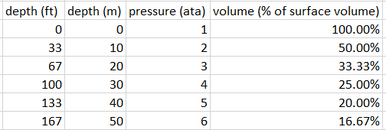Thanks again for your help, ginti, jale and RainPilot
No, not at all. I subscribe to the concept of the thinking diver In addition to the points I mentioned above I also figured that neoprene drysuits may accomodate a smaller range of temperatures, and that they offer less flexibility in the long run (e.g. wanting to go for T1).
In addition to the points I mentioned above I also figured that neoprene drysuits may accomodate a smaller range of temperatures, and that they offer less flexibility in the long run (e.g. wanting to go for T1).
My mind is not fully settled on this and the main reason I started this thread is to gather all the valuable feedback from more experienced divers. I definitely don't blindly follow equipment (or any other) prescriptions.
Another thing, are you buying a trilaminate just because "GUE says so"? Or did you try to challenge the GUE guidelines before to decide on a trilaminate?
No, not at all. I subscribe to the concept of the thinking diver
My mind is not fully settled on this and the main reason I started this thread is to gather all the valuable feedback from more experienced divers. I definitely don't blindly follow equipment (or any other) prescriptions.




